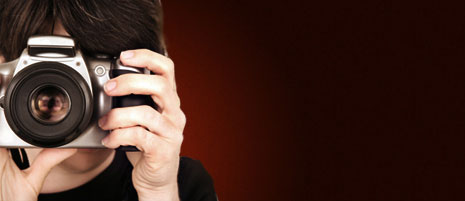History of Photography
"Photography" is a Greek word, originating from "phos" and "graphia", which, loosely translated, means "painting with light". Photography can simply defined as the process in which light patterns are recorded and fixed onto a medium, such as paper or a memory card. In other words, light patterns are reflected off objects and then imprinted on paper (like a photo), or nowadays, into software (like in digital photography).
Today's camera is a descendent of the very first known camera: the camera obscura. People began using this device in the 16th century, and the design was basic, but useful. The device reflected light from an outside source into a dark chamber, which then reflected the light into the inside wall of a box. Camera Obscuras were mostly used by painters to maintain artistic accuracy whilst they meticulously traced their work over and over.
The first known photograph dates back to 1826, under the possession of Joseph Nicephore Niepce, an inventor. Niepce used a camera to capture an image on a pewter plate that was coated with a substance called bitumen of Judea. The exposure of the photograph took 8 full hours in bright sunshine to emerge. When the bitumen was exposed to the sun for that duration, it became hard. Once the 8 hours had passed, the plate was washed, and the image was on the plate. While this was a big development, Niepce was unable to do this on a consistent basis, so he continued to practice again and again with different substance mixtures. Finally a mixture of silver and chalk proved to work quite well, and provided the early photographer with drastic contrast between color.
When Niepce died, he passed on his notes to Jacques Daguerre, an artist who was collaborating in the experimental process. Shortly thereafter, Daguerre made two discoveries of his own: exposing the silver to iodine before, and then mercury after the picture was taking resulted in an inactive image becoming visible. Also, washing the surface in a salt mixture made the image permanent. Daguerre went public with these discoveries, and called the processes Daguerrotyping.
In 1840, William Fox Talbot studied Daguerre's methods, and invented the calotype process. This process involved silver chloride to cover sheets of paper - the very first 'negative' of a photograph. The calotype process allowed for multiple reprints of the same image over and over. The calotyping process is the basis for which negatives are still made today.
In 1884, George Eastman developed film and replaced the copper plate used in the calotype process. 4 short years later, the Kodak camera became available for purchase to photographers, and the Brownie, also made my Kodak was available in 1901. While digital cameras are quickly becoming the new form of photography, very little has changed in the conventional photography method since this time.

